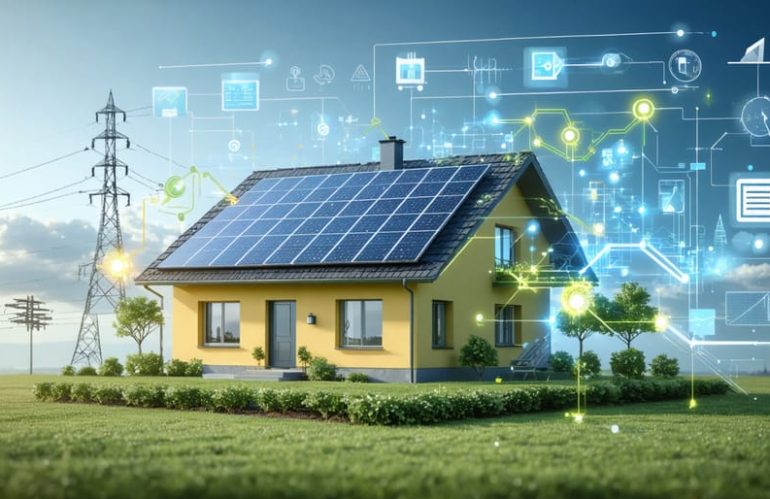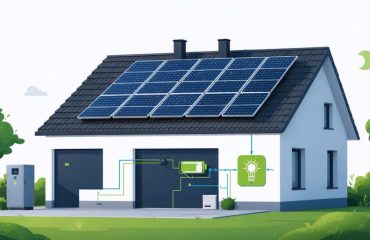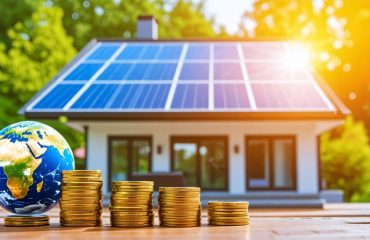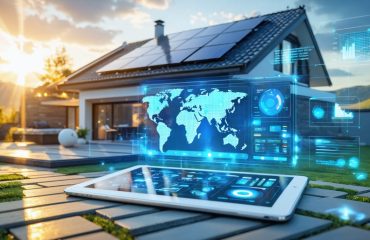Imagine powering your home with intelligence, not just electricity. Smart grid systems are revolutionizing how we interact with energy, transforming traditional residential solar installations into dynamic, responsive networks that optimize power usage in real-time.
Think of a smart grid as your home’s energy conductor, orchestrating the perfect balance between power generation, storage, and consumption. Unlike conventional power systems that simply deliver electricity, smart grids create a two-way conversation between your home and the power grid, enabling automated decisions that save money and reduce waste.
For homeowners, this technology represents a significant leap forward in energy management. Smart grids can automatically adjust your home’s energy consumption based on real-time pricing, shift power usage to off-peak hours, and even sell excess solar power back to the utility company when prices are most favorable. This intelligent infrastructure not only enhances the value of your solar investment but also plays a crucial role in building a more sustainable, resilient energy future.
The promise is clear: smarter energy use, lower utility bills, and a more sustainable future – all through the power of intelligent grid technology.
How Smart Grids Transform Your Solar Investment
Real-Time Energy Management
Real-time energy management through smart grid systems puts unprecedented control in homeowners’ hands. With user-friendly mobile apps and smart home displays, you can track your electricity consumption as it happens, seeing exactly how and when you’re using power throughout the day. This visibility allows homeowners to optimize their energy usage and make informed decisions about when to run major appliances or adjust their consumption patterns.
Smart meters communicate directly with your utility company, providing accurate billing and eliminating estimated readings. The system can automatically adjust your home’s energy use based on real-time electricity prices, running your dishwasher or charging your electric vehicle when rates are lowest. Many smart grid systems also send alerts about unusual energy consumption patterns, helping you identify potential issues before they lead to high bills.
For solar panel owners, these systems are particularly valuable, as they help maximize self-consumption of solar power by suggesting the best times to use major appliances based on your solar production schedule.
Two-Way Power Flow
One of the most exciting features of smart grid systems is their ability to facilitate two-way power flow between homes and the utility grid. Traditional power grids only send electricity one way – from the utility to your home. However, smart grids enable homeowners with solar panels to participate in selling excess power back to utility companies when their systems generate more electricity than needed.
This bidirectional flow creates a more dynamic and efficient energy ecosystem. During peak sunlight hours, your solar panels might produce more power than your home consumes. Instead of letting this energy go to waste, smart meters automatically track and credit you for the surplus electricity fed back into the grid. When the sun isn’t shining, you can draw power from the grid as needed.
The financial benefits are substantial – many homeowners see significant reductions in their energy bills through net metering programs. Plus, this system helps stabilize the broader power grid by providing additional clean energy during high-demand periods, making the entire network more resilient and sustainable.
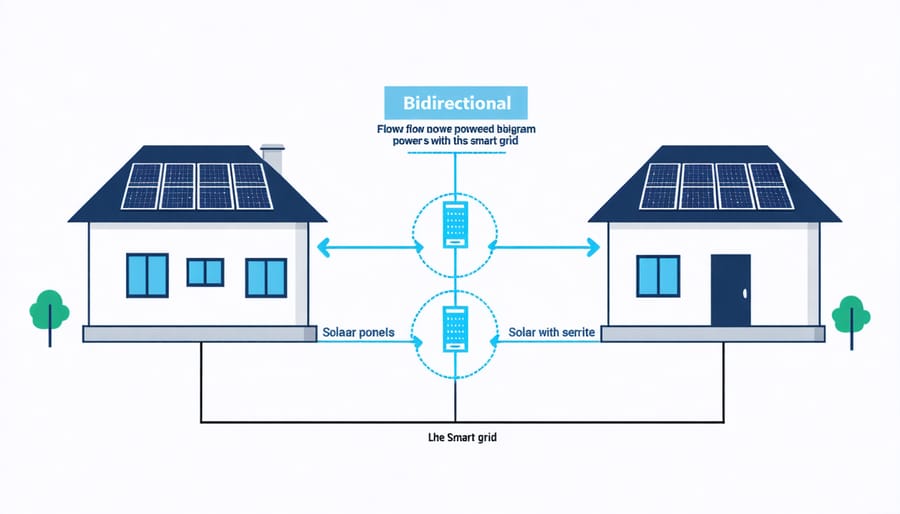
Smart Grid Features That Boost Your Solar Savings
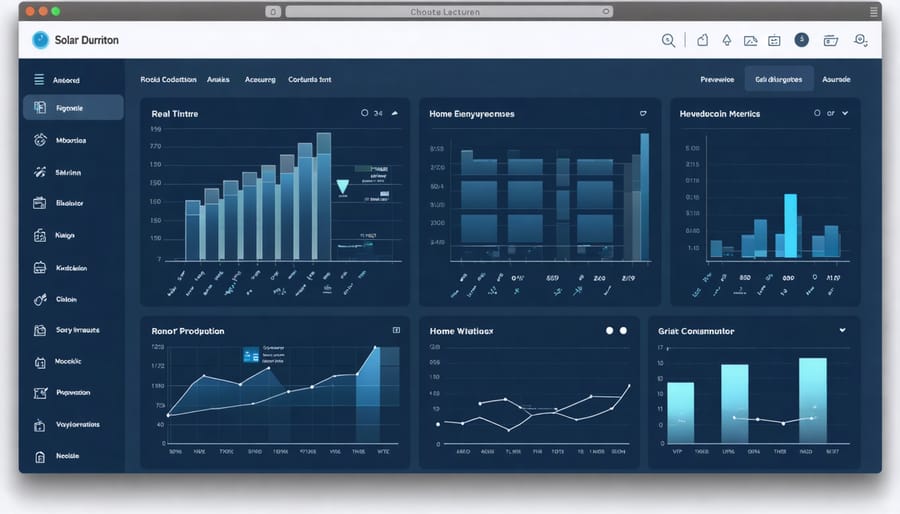
Automated Load Balancing
Imagine your home as a symphony orchestra, with various appliances and devices playing different parts throughout the day. Automated load balancing in smart grid systems acts as the conductor, ensuring every instrument plays at the right time for optimal performance and efficiency.
Smart grids continuously monitor your home’s energy usage patterns and automatically distribute power where and when it’s needed most. For example, during peak morning hours when you’re getting ready for work, the system might prioritize power to your water heater and kitchen appliances while reducing energy flow to less critical areas like the garage or guest rooms.
This intelligent distribution happens in real-time and adapts to your lifestyle. If you typically run your dishwasher at night, the system learns this pattern and ensures adequate power is available during those hours while potentially reducing power to idle devices. This optimization not only prevents energy waste but also helps avoid overloading your home’s electrical system.
The beauty of automated load balancing lies in its ability to work silently in the background. You won’t notice it operating, but you’ll see the results in lower energy bills and more efficient home operation. The system can even predict and prepare for high-demand situations, such as preheating your water during off-peak hours or adjusting your HVAC system based on weather forecasts.
For homes with solar panels or battery storage, load balancing becomes even more sophisticated. The system can automatically switch between grid power and stored energy based on current electricity rates, weather conditions, and your home’s immediate needs, maximizing your energy independence while minimizing costs.
Intelligent Storage Management
Intelligent storage management represents a crucial advancement in modern smart grid systems, seamlessly integrating with battery systems to create an efficient and reliable energy solution for homeowners. This technology acts like a sophisticated energy traffic controller, determining when to store excess power and when to use it, ultimately maximizing your solar investment.
The system monitors your home’s energy consumption patterns and automatically adjusts storage strategies based on several factors, including weather forecasts, time-of-use electricity rates, and your typical usage habits. During peak sunlight hours, when your solar panels generate more power than needed, the smart grid directs excess energy into storage. Later, during evening hours or cloudy days, this stored energy is intelligently released to power your home.
What makes this system truly “smart” is its ability to learn and adapt. It can anticipate your energy needs based on historical data and make proactive decisions. For example, if the forecast shows several cloudy days ahead, the system might prioritize storage during available sunny periods. Similarly, if electricity rates are scheduled to spike during peak evening hours, it will ensure your stored energy is available to avoid higher utility costs.
This intelligent management also includes safety features that protect your storage investment by maintaining optimal charging cycles and temperature control. The system continuously monitors battery health and performance, alerting you to any maintenance needs before they become issues, ensuring long-term reliability and maximum return on your investment.
Setting Up Your Smart Solar Home
Required Components
A smart grid system relies on several key components working together seamlessly to create an efficient and responsive energy network. At its core, smart meters serve as the foundation, providing real-time energy consumption data to both homeowners and utility companies. These digital devices replace traditional analog meters and communicate usage information wirelessly.
Advanced sensors and monitoring devices throughout the grid detect power quality, voltage fluctuations, and potential issues before they become problems. Smart transformers help manage power distribution more effectively, while automated switches enable quick rerouting of electricity during outages or peak demand periods.
On the software side, energy management systems (EMS) act as the brain of the operation, processing data and making intelligent decisions about power distribution. These systems often include user-friendly interfaces that allow homeowners to monitor and control their energy usage through smartphone apps or web portals.
Communication infrastructure is another crucial component, typically utilizing a combination of wireless and wired technologies to ensure reliable data transmission. This includes cellular networks, fiber optic cables, and secure internet protocols that protect sensitive information.
Storage solutions, such as smart batteries and power banks, help balance supply and demand by storing excess energy for later use. Finally, grid integration software ensures all these components work together harmoniously, creating a responsive and efficient energy ecosystem that benefits both consumers and utilities.
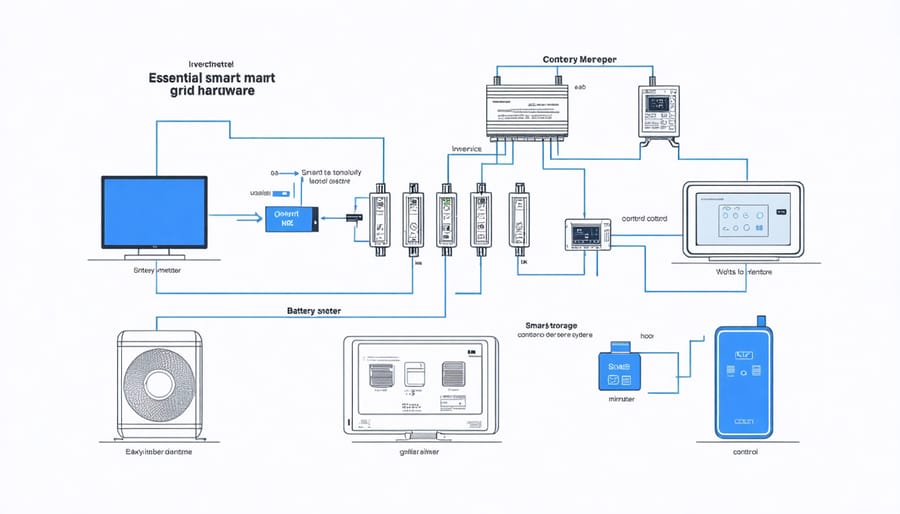
Installation Process
Installing a smart grid system in your home is a straightforward process that typically takes place in several organized stages. First, a certified technician will assess your current electrical setup and energy consumption patterns to determine the optimal configuration for your needs. This evaluation usually takes about 2-3 hours and helps create a customized installation plan.
The next phase involves installing a smart meter, which replaces your traditional electric meter. This upgrade is often completed by your utility company at no additional cost. Following this, the technician will install a home energy management system (HEMS), which serves as the brain of your smart grid setup. This includes placing various sensors throughout your home and connecting them to your home’s Wi-Fi network.
The installation team will then set up a user-friendly control interface, typically through a smartphone app or web portal, allowing you to monitor and manage your energy usage. They’ll also install any additional components like smart thermostats, automated switches, or smart appliance controllers as needed.
The final step involves system testing and user training. Your installer will verify all components are working correctly and teach you how to use the system effectively. Most installations can be completed within 1-2 days, depending on your home’s size and the system’s complexity. After installation, you’ll receive ongoing support and software updates to ensure optimal performance.
Future-Proofing Your Solar Investment
As solar technology continues to evolve, making your solar investment future-proof is essential for long-term success. Today’s smart grid systems are designed with adaptability in mind, allowing homeowners to integrate new technologies and features as they become available.
One of the most promising developments is the growth of virtual power plants (VPPs), which allow multiple solar-powered homes to work together as a unified energy resource. By ensuring your current system includes smart inverter technology and bidirectional communication capabilities, you’ll be ready to participate in these community-based energy networks when they become available in your area.
Battery storage technology is another rapidly advancing field. While you might not be ready to invest in battery storage today, choosing a smart grid system that’s battery-ready will make future integration seamless. Look for systems with built-in expansion ports and software that can accommodate battery addition without major modifications.
The rise of electric vehicles (EVs) is another important consideration. Modern smart grid systems can be configured to optimize charging schedules and even use your EV as a backup power source during outages. When selecting your system components, ensure they’re compatible with EV charging integration to avoid costly upgrades later.
Artificial intelligence and machine learning are becoming increasingly important in energy management. Today’s smart grid systems should include regular software update capabilities to take advantage of improved efficiency algorithms and new features as they’re developed.
To maximize your system’s longevity:
– Choose equipment from established manufacturers with strong warranty programs
– Ensure your installer provides documentation for future expansion
– Select systems with open communication protocols that can work with various brands
– Opt for modular designs that allow for easy component upgrades
– Look for systems with robust mobile apps that receive regular updates
Remember that while initial costs might be slightly higher for more adaptable systems, the long-term benefits often outweigh the upfront investment. Regular maintenance and software updates will help ensure your system continues to perform optimally as grid technologies evolve.
By making informed choices today about system flexibility and expandability, you can protect your investment and take advantage of future innovations in smart grid technology without requiring a complete system overhaul.
Smart grid systems represent a revolutionary step forward in how we manage and consume energy in our homes. By embracing this technology, homeowners can experience immediate benefits like reduced energy bills, increased control over their power consumption, and the satisfaction of contributing to a more sustainable future. The real-time monitoring and automated optimization capabilities ensure that every kilowatt of energy is used efficiently, while the integration with renewable energy sources makes it easier than ever to transition to clean power.
The financial advantages are compelling, with many households reporting significant savings on their monthly utility bills after implementing smart grid technologies. Beyond individual benefits, these systems contribute to a more resilient and reliable power infrastructure for entire communities, reducing the frequency and duration of outages while enabling faster recovery when they do occur.
As we move toward a future increasingly powered by renewable energy, smart grid systems will become not just beneficial but essential. Their ability to balance supply and demand, integrate various energy sources, and adapt to changing conditions makes them a crucial component of our sustainable energy future.
Now is the perfect time to consider implementing smart grid technology in your home. With advancing technology, decreasing costs, and increasing utility support, the barriers to adoption are lower than ever. By making the switch today, you’ll be at the forefront of the energy revolution while enjoying immediate benefits for your household and the environment.

